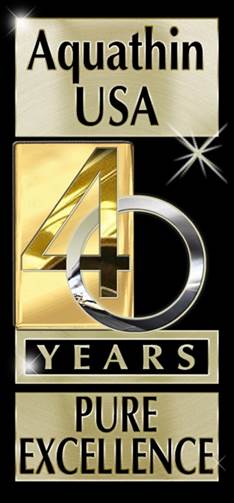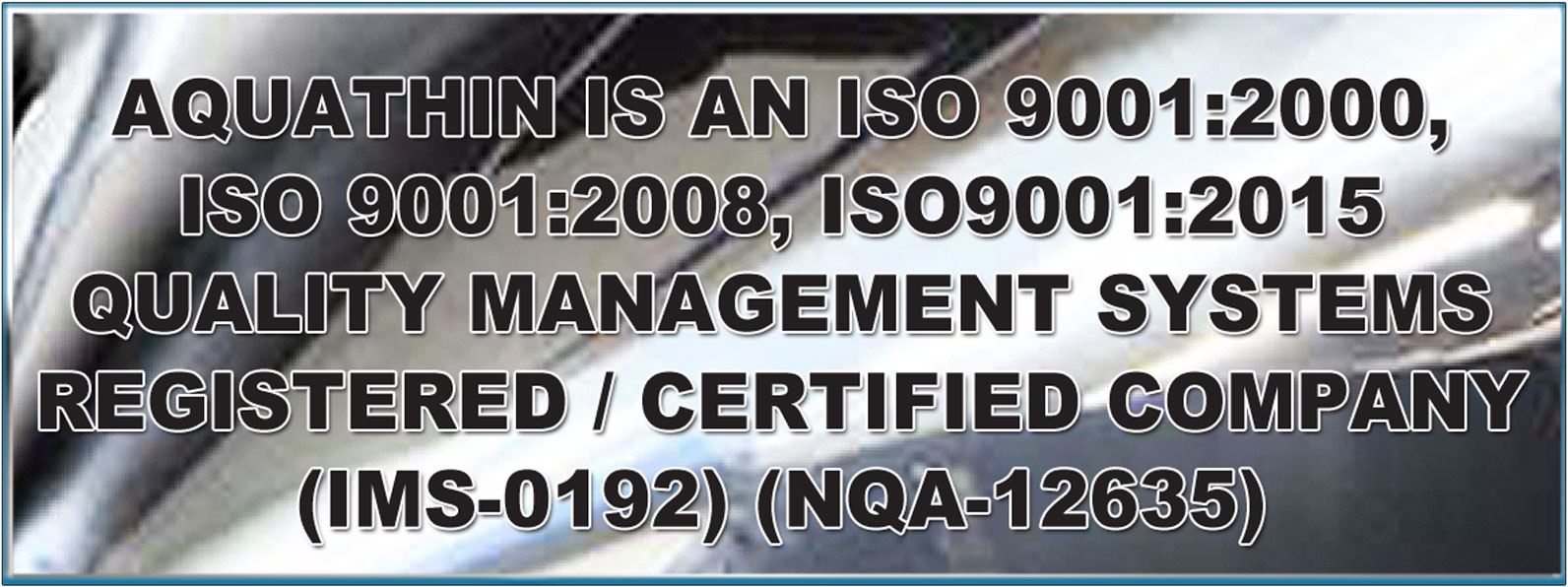Forum Q & A - Deionization & Reverse Osmosis
Dear Aquathin Dealer On-Line;
Welcome to TheNewForum Q & A from Aquathin Headquarters. We receive many questions every week from you our friends and Dealers, as well as prospective Dealers and end users around the world concerning technical needs and support for sales and marketing. We thought that it would make a great New Year's Resolution to send you all these Questions & Answers as you yourself may have need someday, or wish to pass on to your staff, or simply thankful to have an old "mind file" refreshed. We will only provide you with the "meat and potatoes" portion of the responses keeping it brief and forward any leads as always !!!
So be sure to watch your email closely for both the SPLASH ON LINE NEWSLETTERS AND THE NEW FORUM Q & A! Enjoy!!
Happy New Year !! Warmest regards,
FOR THE BEST TASTE IN LIFE Think Aquathin..AquathinK !!
Celebrating our 22nd birthday in 2002 !!! (visit the allnew http://www.aquathin.com)
"Alfie"
Alfred J. Lipshultz, President
P.S. When responding please continue 'REPLY' to include all previous correspondences on this subject.
________________________
Today's Forum Q & A comes from Craig, a potential customer in Quebec who wants to know what is in the Deionization Module and how does it works. Craig's inquiry was also forwarded onto two Authorized Dealers in Quebec.
DEIONIZATION
The Aquathin Reverse Osmosis Element has the ability to reject (92+% to 97+%, CTA style vs. TFC style @ 60F-70F @ 60-70psi) of the dissolved inorganics in water. Rejection is based on the degree of removal of Na+ and Cl-. Although the RO has a higher percentage of removal of di, tri and quatrovalenced elements (i.e. 99% Al), the monovalenced elements are rejected at the percentages referenced above. The Aquathin Patented RO Process also removes disease causing waterborne microorganisms.
RO is not as efficient (only about 50%-65%) for nitrates, nitrites and VOCs (volatile organic chemicals i.e. hydrocarbons such as benzene, ethylene, toluene, zylene, MTBE ). The nominal 8% or less of dissolved solids, mostly monovalent, and balance of any other inorganic and organic contaminates enter the four staged Aquathin Deionization Module. The DI resin is a manmade plastic bead that is chemically made anionic (OH-) and cationic (H+). This is a superior "nuclear grade" resin as opposed to the industrial type of cationic resin (Na+) that is utilized in a water softener. In a water softener a substitution reaction occurs whereby Na+ is exchanged for Ca++ and Mg++ at a 2:1 ration. In the proprietary Aquathin DI Module that is specially produced to compliment the Aquathin RO Membrane, H+ and OH- are exchanged for the monovalenced elements in the RO permeate. Therefore, all the Aquathin System puts into the water is H+OH- or H20.
The last three inches of the DI Module is granulated activated carbon (GAC), the same high quality adsorptive carbon made use of in the Aquathin MegaChar Total Home Filter. Its purpose is to enhance what some term a flat taste and to remove any organic that may appear in trace form from a partial degree of removal via the RODI processes. To date we know of no such organic that is not rejected by the RO and / or bond is broken and force into radical state and subsequently exchanged (substituted), or adsorbed in the DI Module. At that point the GAC participates as a failsafe for organic removal. The RODI water finally passes a .2 micron pad for backup bacterial protection in the unlikely event a membrane could rupture and simultaneously serves to prevent reverse migration of contaminates.
REVERSE OSMOSIS
Osmosis is a natural phenomenon whereby a low concentration of salts is drawn to a high concentration of salts passing through a semi permeable membrane. This occurs in all forms of living nature, animal and plant. Reverse osmosis is then a reduction of a high concentration of salts to a low concentration of salts passing through a semi permeable membrane. Whereas osmosis takes place naturally utilizing what is known as the "osmotic pump (salts attraction to salts)" reverse osmosis requires an external pressure to break the laws of nature (the osmotic pump) and force the fluid through the membrane. Basically only the H2O molecule can pass the .0001 micron or less pore structure of the membrane (NOTE other contaminates can partially pass i.e monovalent salts, VOCs, nitrates. These are further eliminated by GAC pretreatment, higher source pressure, deionization). Consequently, the source side of the membrane constently has a higher concentration of salts. This would be similar to boiling all the water from a tea kettle and observing the dust residue remaining. Another example here is lets say the water in the tea kettle was 500 ppm TDS. By boiling half away (similar to removing half the water through a membrane) the TDS equates to 1000 ppm. As the concentration would increase further it approaches a saturation index and consequently no further salts would remain in solution...they precipitate and fall out of solution forming a crystalline plaque that blinds the pores of the membranes. In order to avoid this, the RO mechanics allows for a chronic bleed off of the high concentration of salts preventing them from reaching saturation and plaquing. Normally residential systems operate around 3 or 4 to 1 gallon brine to product ratio. Commercial systems operate normally 2 to 1 (this discussion is for tap water applications where TDS is less than 2000 ppm. Ratios increase for brackish and tap water). Said conversely, if your client were to restrict the brine flow, the membranes would foul out.
CTA vs TFC
Regarding the KT90-1 (or an Aquathin RO model ending -1); this unit contains our CTA membrane (92%-94% rejection at 14gpd), tolerates a pH of 5.5 to 8.5 and is slightly bacterial resistant, hence installation is meant for chlorinated water supplies. We prefer to send the KT90-2 with a small Carb12 prefilter. This unit contains our TFC membrane (as well as any RO model ending -2...97+% rejection at 24gpd), tolerates a wider range of 2-11 and is totally bacterial resistant. The carbon prefilter permits installation on chlorinated or unchlorinated water supplies. Both models are our patented RODI process. You may choose either model. Also, you will be interested to know that you can install your Aquathin RODI systems on water with hardness up to 25 grains without softening pretreatment. Other companies limit their RO units to 10grains. We get this accomplished with our manual or patented auto flushing to purge potentially plaquing debris.


